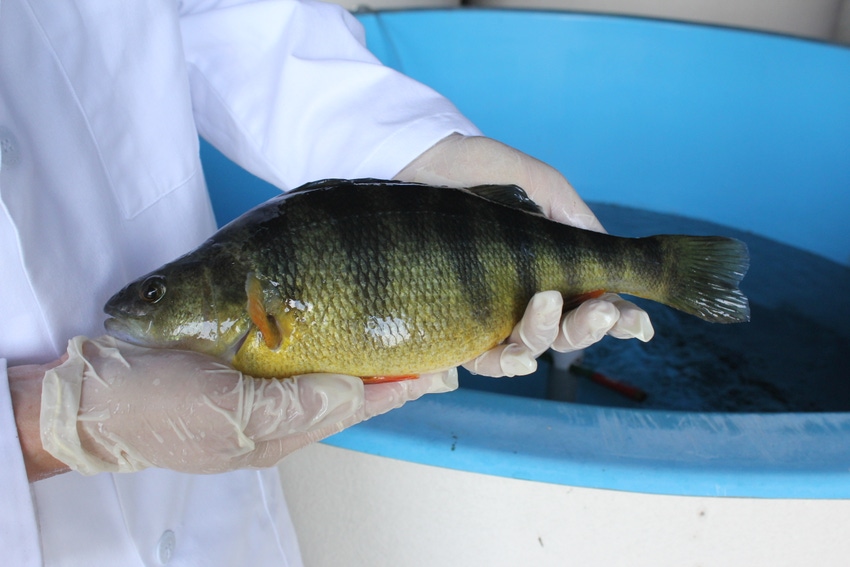Artificially mating fish leads to faster growth, with less time to market.
April 11, 2018

Inside tanks filled with cool water in southern Ohio are female yellow perch mating with other female yellow perch and male bluegills with other male bluegills, defying the laws of nature. This is because Hanping Wang, who manages The Ohio State University’s Ohio Center for Aquaculture Research & Development, has succeeded in raising faster-growing fish by artificially mating them in a not-so-typical way.
On average, the resulting offspring reach market size six months faster than bluegills or yellow perch bred via standard male/female mating. That’s because female yellow perch grow more quickly than the males, while male bluegills grow faster than females.
For fish farmers, having fish that mature faster than average could result in a significant savings in fish food and in the time it takes to sell them, said Wang, whose center in Piketon, Ohio, is part of Ohio State’s College of Food, Agricultural & Environmental Sciences. It said the aim of the center is to spur Ohio’s aquaculture industry, in part through research on two of the state’s most common fish: yellow perch and bluegills.
While the practice of raising fish in a controlled environment of indoor tanks or outdoor ponds, known as aquaculture, is growing, it is still a relatively small industry in Ohio, so any advances in farming that make it faster or easier to raise fish or shellfish could prove useful and profitable.
“We’re using the animals’ maximum potential to make them grow faster for human benefit,” Wang said. “We have to do it this way to meet the growing need for food, specifically protein. You need to have a process to produce more animals — more chickens, cows, pigs and fish.”
Among yellow perch, the females grow 60-70% faster than the males, and they grow larger than the males. As a result, it makes sense that a breeder would want to produce the fastest-growing female yellow perch. So, Wang did exactly that. He mated females to females with the help of grants from the U.S. Department of Agriculture and the state-based Ohio Sea Grant program, which funds research in the Great Lakes and in aquaculture.
On average, it takes 16 months to farm-raise a yellow perch to market size. Now, it can take as few as 10 months if neo-males are mated with typical female yellow perch, Wang said.
“The farmer saves on labor, saves on feed and saves on space,” he noted.
With bluegills, the males grow faster and bigger than the females, so Wang mated males with males through a process similar to what was done with the yellow perch, and they became what Wang calls “neo-females.” The offspring of a neo-female bluegill and a male bluegill were all male fish that could grow to 1 lb. — the size needed to sell them — in about a year, cutting three to five months off the typical time it takes for the fish to mature.
“It doesn’t matter if it’s a fish or a tomato or a soybean; if you can shorten the amount of time it takes to grow the item to market size while still maintaining the same nutritional quality, that will just improve the farmer’s profit margin,” said Matthew Smith, an Ohio State Extension aquaculture specialist whose main priority is expanding sustainable, profitable fish farms in Ohio.
You May Also Like



